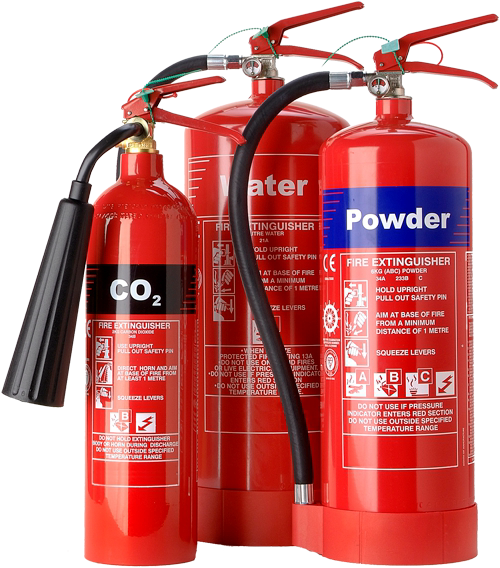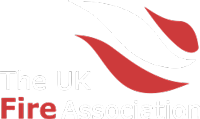Simplified Guide
Fire Extinguisher Regulations in the UK
Please take a look at our Fire Extinguisher regulations in our facts page below. If anything is unclear or you need specific advice for your business, we can arrange for one of our qualified engineers to visit your premises and carry out a free, no-obligation survey.
Just get in touch with our friendly team by calling 01524 587 720.

Fire extinguisher regulations in the UK can feel a little complicated. Below we provide a simplified guide to the UK’s current laws on fire extinguishers.
As with all fire safety legislation in England and Wales, Fire Extinguisher regulations form part of ‘The Regulatory Reform (Fire Safety) Order 2005’, also known as the ‘RRO’.
All premises used for non-domestic purposes, with a few minor exceptions, come under this order.
Whilst the legislation has been responsible for dramatically reducing commercial fires in the UK, it can be difficult to interpret if you’re not a fire safety professional – which is why we have answered some of the most frequently asked questions below as clearly and simply as possible.
UK fire extinguisher regulations state that you should have a minimum of two ‘Class A’ extinguishers on every storey of the building. Class A fire extinguishers are those which put out wood or paper fires, also known as ‘carbinaceous’ fires.
Class A fire extinguishers meeting this regulation are:
– 3 litre foam extinguishers
– 6 litre foam extinguishers
– 9 litre water extinguishers
Depending on the equipment in your business premises, you are likely to need other types of fire extinguisher.
The most common of these are CO2 extinguishers which are used to fight electrical fires.
UK fire extinguisher regulations specify:
– All premises with electrical equipment must have at least 2kg CO2 extinguishers
– Where there is 415 volt rated equipment, then 5kg CO2 extinguishers are required
There are very few exceptions where you won’t need a CO2 extinguisher which is why it is very common to see these paired with foam or water extinguishers, thereby meeting UK fire extinguisher legal requirements.
Other types of extinguisher you may need are:
– Dry powder extinguishers: for gas risk, e.g. in boiler rooms (not recommended for other indoor use)
– Wet chemical extinguishers: for kitchens with deep-fat fryers (size of extinguisher depends on size of fryer)
The most common of these are CO2 extinguishers which are used to fight electrical fires.
UK fire extinguisher regulations specify:
– All premises with electrical equipment must have at least 2kg CO2 extinguishers.
– Where there is 415 volt rated equipment, then 5kg CO2 extinguishers are required.
There are very few exceptions where you won’t need a CO2 extinguisher which is why it is very common to see these paired with foam or water extinguishers, thereby meeting UK fire extinguisher legal requirements.
Other types of extinguisher you may need are:
– Dry powder extinguishers: for gas risk, e.g. in boiler rooms (not recommended for other indoor use)
– Wet chemical extinguishers: for kitchens with deep-fat fryers (size of extinguisher depends on size of fryer)
This is to discourage people from moving them around, for example, using them to prop doors open.
All extinguishers should also be clearly signposted with fire extinguisher ID signs fixed to the stand or the wall. Extinguisher ID signs explain which type of extinguisher they are, and how and when to use them.
Fire extinguishers must be commissioned on-site by a competent person. This generally means someone who has passed the BAFE fire extinguisher exam or has an equivalent qualification.
Unfortunately fire extinguishers cannot be commissioned before they are installed. This is because issues may arise during the installation itself.
Fire extinguishers are not compliant with UK fire extinguisher legislation until they have been commissioned, even if you have the right types and sizes of extinguisher in the right locations.
Examples of things checked during commissioning are:
– The extinguishers have been assembled properly
– Hoses and horns are correctly attached
– They are of the right weight or pressure
– They are undamaged
The extinguisher engineer will provide you with a certificate as evidence that your extinguishers have been commissioned in accordance with UK regulations.
Fire extinguisher regulations state that extinguishers must be serviced annually (i.e. once a year) by a qualified engineer.
– Is the extinguisher in date?
– Is it in visibly good condition?
– Has it been tampered with?
– Is the weight and/or pressure correct?
– Does the pin work?
– Is the hose in good working order?
– Are the instructions on the extinguisher legible?
At the end of the service, the engineer will be able to tell you which extinguishers need replacing, or advise on additional extinguishers you may need to bring you in line with regulations.
1. There will be a service label on the extinguisher showing that it has been serviced in the last year and saying when the next service is due.
2. The service label will record the outcome of the last service as one of the following:
– received a basic service
– was refilled
– needs replacing (in which case a new extinguisher should have been purchased)
3. There will be something preventing the pin being accidentally pulled out, such as an ‘anti-tamper tag’.
Exception to the rule: this is not the case for extinguishers with plastic pins which have a different design. For these types of extinguisher, the pin itself should be replaced every year.
4. The O-Ring will have been replaced (an O-Ring makes sure the extinguisher has an airtight seal).
5. You will have an in-date service certificate from a qualified engineer.
Exceptions to the rule: if an extinguisher is damaged, discharged or otherwise unable to be used safely, then it should be replaced immediately.
For this reason, latest guidelines recommend replacing extinguishers rather than refilling them – because the residue would have to be disposed of by specialist means.
This also means that, these days, the cost to replace extinguishers is usually on a par with refilling.
Get in touch today.
Ensuring your fire protection and security systems work when you need them to. Don’t delay your safety checks, get booked in today!

